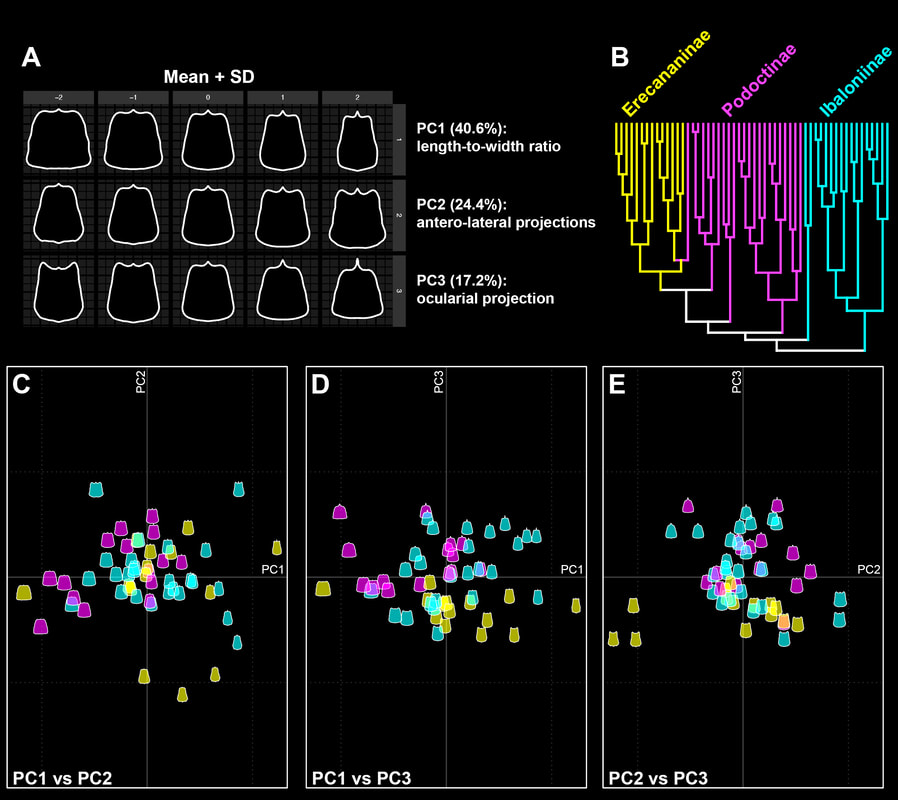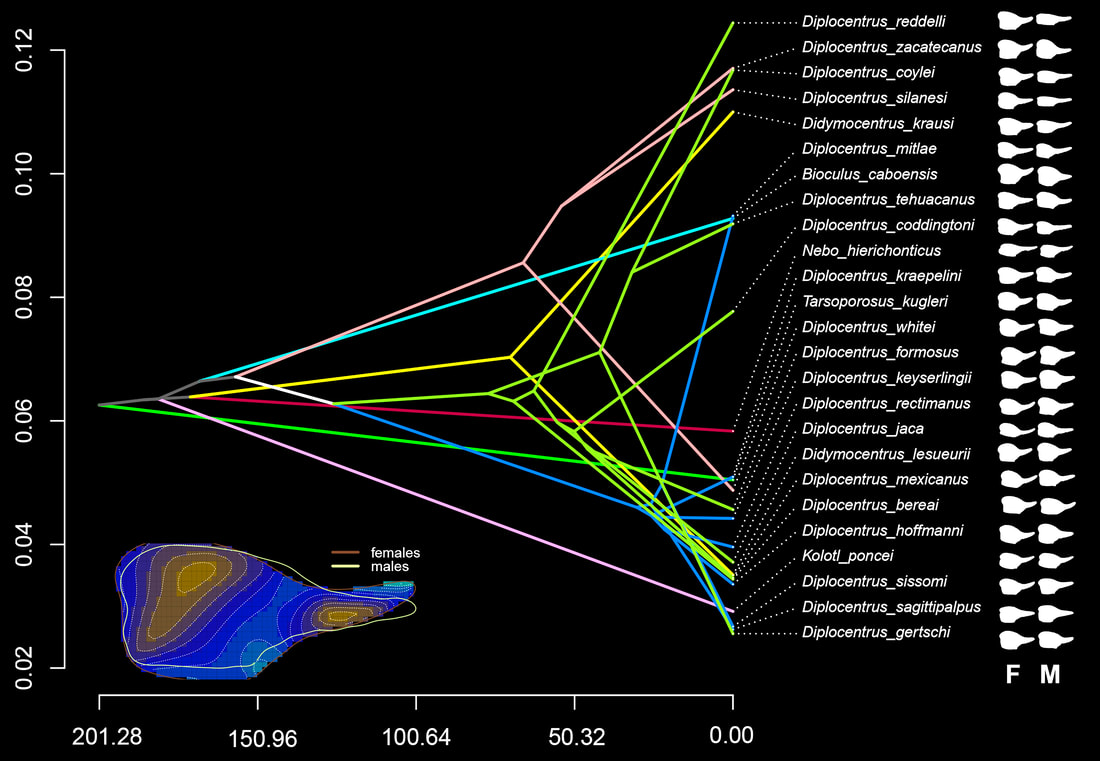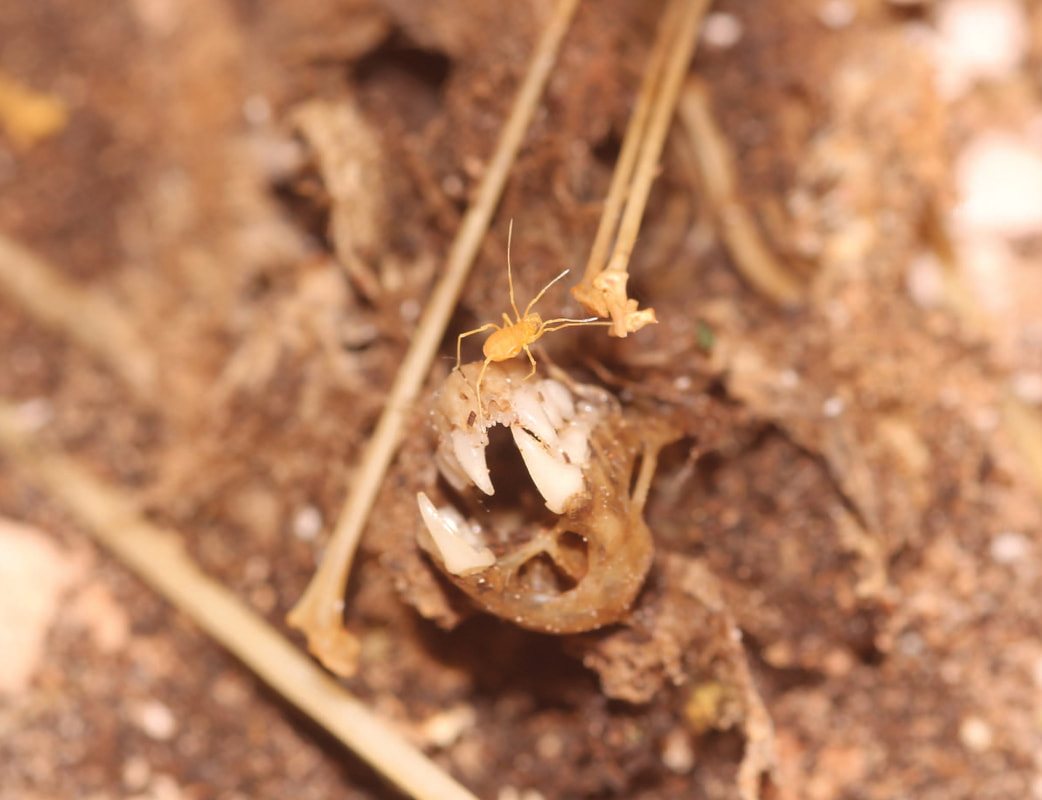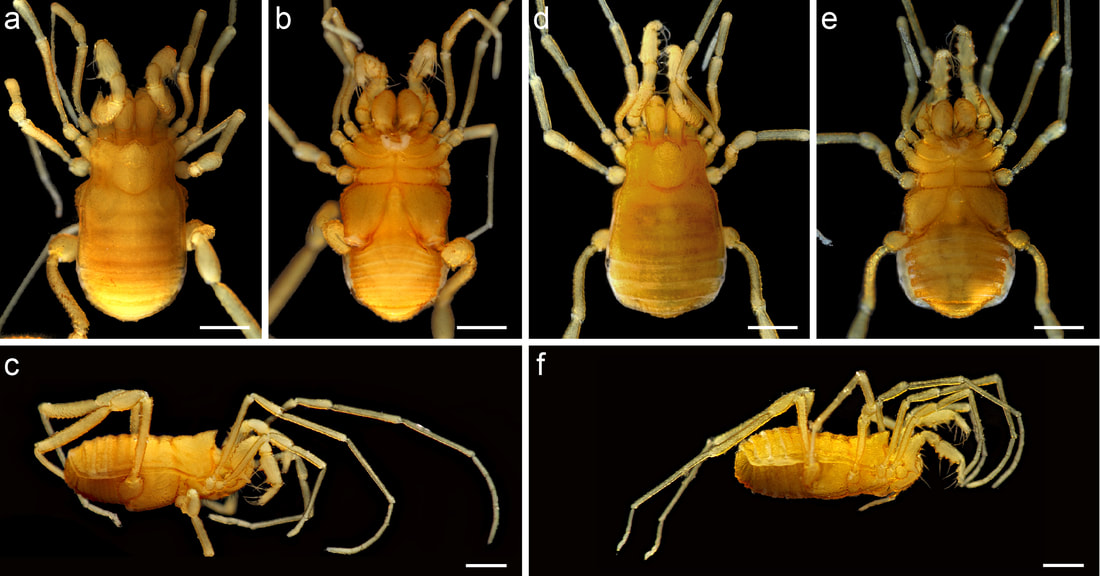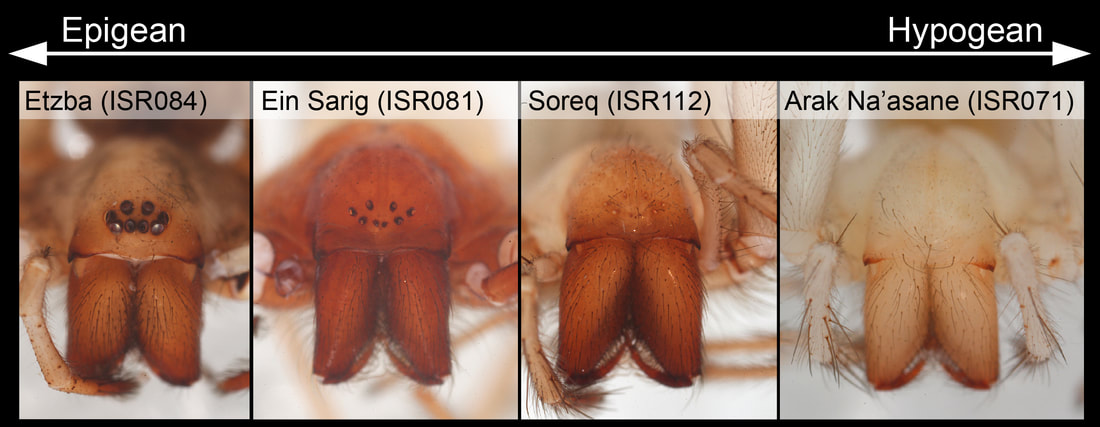Biodiversity discovery
The systematics side of the lab applies taxonomic expertise in conjunction with molecular tools to (1) describe new species of arthropods, (2) understand their evolutionary relationships, and (3) test hypotheses of morphological or biogeographic evolution.
Examples of recent projects
Among our recent projects, we have used parametric analyses of shape to explore the utility of taxonomic ranks in Opiliones (harvestmen), such as in the family Podoctidae.
Examples of recent projects
Among our recent projects, we have used parametric analyses of shape to explore the utility of taxonomic ranks in Opiliones (harvestmen), such as in the family Podoctidae.
Under a molecular phylogenetic framework, parametric analyses of shape can be useful for identifying morphological convergence or characterizing the evolutionary dynamics of sexual dimorphism. In the figure below, this approach is used to visualize the divergence of sexual dimorphism in pedipalpal shape in the scorpion family Diplocentridae. The heatmap in the corner shows the parts of this morphological structure that are the most prone to evolutionary lability.
Ongoing efforts
Currently, biodiversity projects in the lab are focusing on the description of cave arachnofauna of Israel. Through fieldwork, morphological descriptions, and phylogenomic datasets, we were able to show that the harvestman species below, endemic to a single cave, is a member of the mostly sub-Saharan African family Pyramidopidae--this species is a relict from a time before the aridification of the Saharan desert, when the forests of the Levant and sub-Saharan Africa were contiguous.
With my colleague, Dr. Efrat Gavish-Regev, we are currently working towards species delimitation and taxonomic descriptions of blind spiders from 44 cave sites throughout the Levant. These morphospecies exhibit an array of eye reduction phenotypes, but their phylogenetic relationships are currently unknown.

